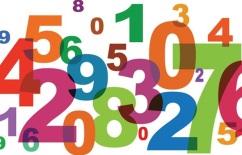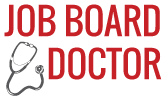Number-fied: what I learned at the JobG8 summit
 There is just nothing like late June in Orlando (unless perhaps you prefer mid-July): 95% humidity, temperatures hovering in the low 90s, and drenching thunderstorms with sheet lightning. Oh, and don’t forget the tourists!
There is just nothing like late June in Orlando (unless perhaps you prefer mid-July): 95% humidity, temperatures hovering in the low 90s, and drenching thunderstorms with sheet lightning. Oh, and don’t forget the tourists!
So I was initially not so excited when I learned that the JobG8 Summit followed SHRM – in Orlando, in late June. But you know what? My misgivings vanished more quickly than cash at a Disney resort during the first hour of the conference. It was very good.
Isabelle Hung, director of talent acquisition at ADP, set the tone for what followed – she asked job boards to give her more data about candidates, and to give it to her in a clean, easy-to-use package. During the panel discussion that followed, recruiters from Samsung and AT&T mentioned (over and over) that LinkedIn was providing them with the kind of data and reporting that they wanted – so why can’t job boards? The money quote: “If I was building a job board today, I’d focus on candidate activity, community, and data.”
During the mobile panel discussion, two things became quite clear: apps aren’t for everyone, and the mobile experience needs to get more seamless and robust. I can’t argue with either of those sentiments!
Then big data reared its inevitable head. Alex Sigal of IBM pointed out that if you’re going to use big data, ask the right question. Makes sense – as did the point that user experience is key if you’re actually going to get anything out of the data you’re analyzing.
Numbers popped up again in the next session, but in a different form: pricing. Melissa Sueling of McKinsey walked the crowd through a straightforward but relatively detailed look at different pricing structures: how they worked and what they achieved. Based on conversations with attendees, this seemed to be one of the most popular sessions of the conference. Talking about revenue is always smart, I guess.
John Sumser of HR Examiner led off with one of my favorite lines from the summit: “Job boards used to be the hubs (in online recruiting); now they’re the spokes.” He also made the useful point that while big brands get all the recruiting press, they are not representative of most job boards’ customers, which are often mid-sized and smaller companies.
Steve Carter of eHarmony dove back into the numbers (and I mean a deep dive) during his walk-thru of what their job board (well, you can’t really call it that) will do when it rolls out at the end of the year. As per an earlier speaker, he emphasized that it’s critical in data science to ask the right question (which he amusingly demonstrated was not the case with most people in their romantic lives).
The numbers kept coming as Josh Gampel of Recruitics gave a detailed picture of how big data can be applied to a job board’s operation. He also stressed that job boards should be using retargeting to get applicants to revisit the site after their initial visit.
Bottom line: I learned plenty, the networking was great, and I completely forgot about the muggy, rainy weather outside.
Until the conference ended, that is. Ok guys, how about Hilton Head in May next time?
[Want to get Job Board Doctor posts via email? Subscribe here.]. [Check out the JobBoardGeek podcast archive!]